Beyond Belief: Exploring India’s Top 10 Temples
Exploring India’s Top 10 Temples: Indian temples are sacred places of worship and cultural significance, deeply rooted in the country’s rich history and diverse religious traditions. They come in various architectural styles, sizes, and have distinct practices and beliefs associated with them. Here’s an overview of Indian temples:
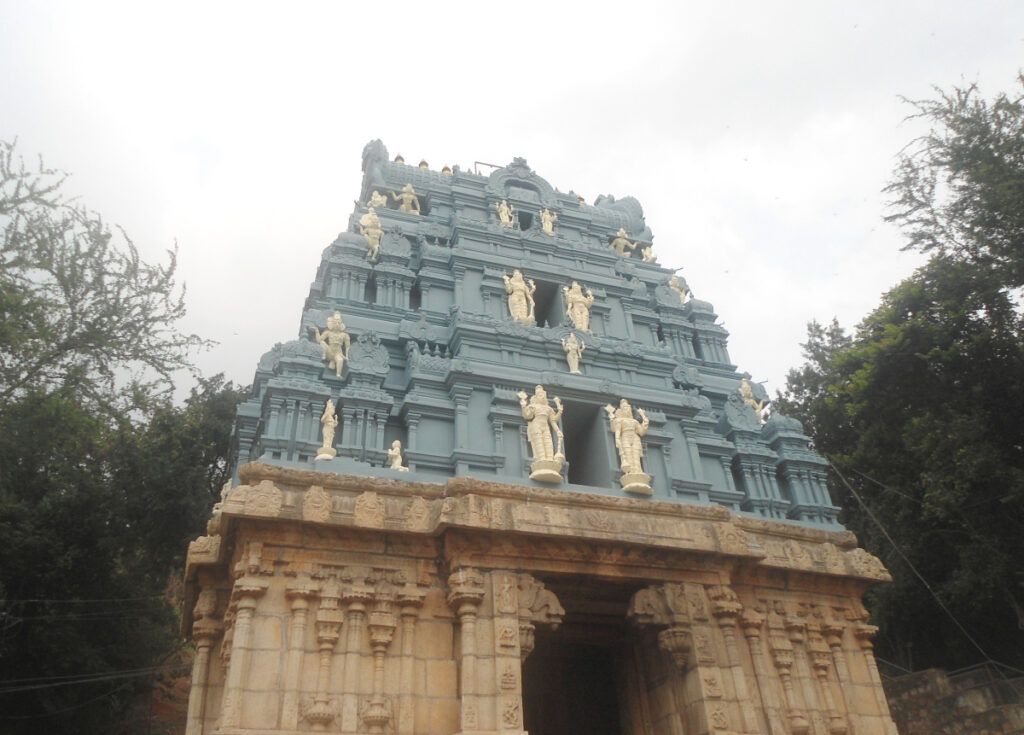
Religious Diversity: India is a land of religious diversity, and its temples reflect this diversity. The most prevalent religions with temples in India are Hinduism, Buddhism, Jainism, and Sikhism, but you can also find temples for other faiths.
Hindu Temples: Hinduism has a vast array of temples dedicated to different deities. Some famous ones include the Varanasi Kashi Vishwanath Temple, Tirupati Balaji Temple, and the Golden Temple in Amritsar.
Architecture: Indian temple architecture is renowned for its intricate designs, detailed sculptures, and unique styles. The most prominent architectural styles are Dravidian (South India) and Nagara (North India). The Khajuraho Temples, Konark Sun Temple, and the Meenakshi Temple are excellent examples of Indian temple architecture.
Religious Rituals: Temples are not just architectural marvels but also centers for religious rituals and cultural practices. Devotees visit temples to offer prayers, perform rituals, and seek blessings from deities.
Spiritual Significance: Temples are considered the dwelling places of gods and goddesses. They are also places of spiritual learning and meditation, where devotees can attain peace and spiritual enlightenment.
Festivals and Celebrations: Temples play a crucial role in celebrating various festivals and events. Festivals like Diwali, Navratri, and Maha Shivaratri are celebrated with great enthusiasm in temples across India.
Pilgrimage Destinations: Many Indian temples are important pilgrimage destinations. Devotees from all over the country and the world visit these sacred places to seek divine blessings and fulfill their spiritual aspirations.
Historical Significance: Several temples have historical significance, with legends and stories associated with their construction. For example, the Kedarnath Temple in the Himalayas is believed to have been established by the Pandavas of the Mahabharata.
Preservation and Conservation: India has a rich heritage of temples, and the government and various organizations work to preserve and protect these historic structures. The Archaeological Survey of India plays a significant role in maintaining and conserving ancient temples.
Tourist Attractions: Indian temples are not only spiritual centers but also popular tourist attractions due to their architectural beauty and cultural importance. They offer a glimpse into India’s ancient traditions and artistic achievements.
India is home to a vast number of temples, each with its own unique significance and architecture.
Contents
- 1 1. Vaishno Devi Temple, Jammu and Kashmir:
- 2 2. Tirupati Balaji Temple, Andhra Pradesh:
- 3 3. Kashi Vishwanath Temple, Uttar Pradesh:
- 4 4. Golden Temple (Harmandir Sahib), Punjab:
- 5 5. Konark Sun Temple, Odisha:
- 6 6. Meenakshi Amman Temple, Tamil Nadu:
- 7 7. Somnath Temple, Gujarat:
- 8 8. Akshardham Temple, Delhi:
- 9 9. Jagannath Temple, Odisha:
- 10 10. Brihadeeswarar Temple, Tamil Nadu:
Here are India’s Top 10 Temples:
1. Vaishno Devi Temple, Jammu and Kashmir:
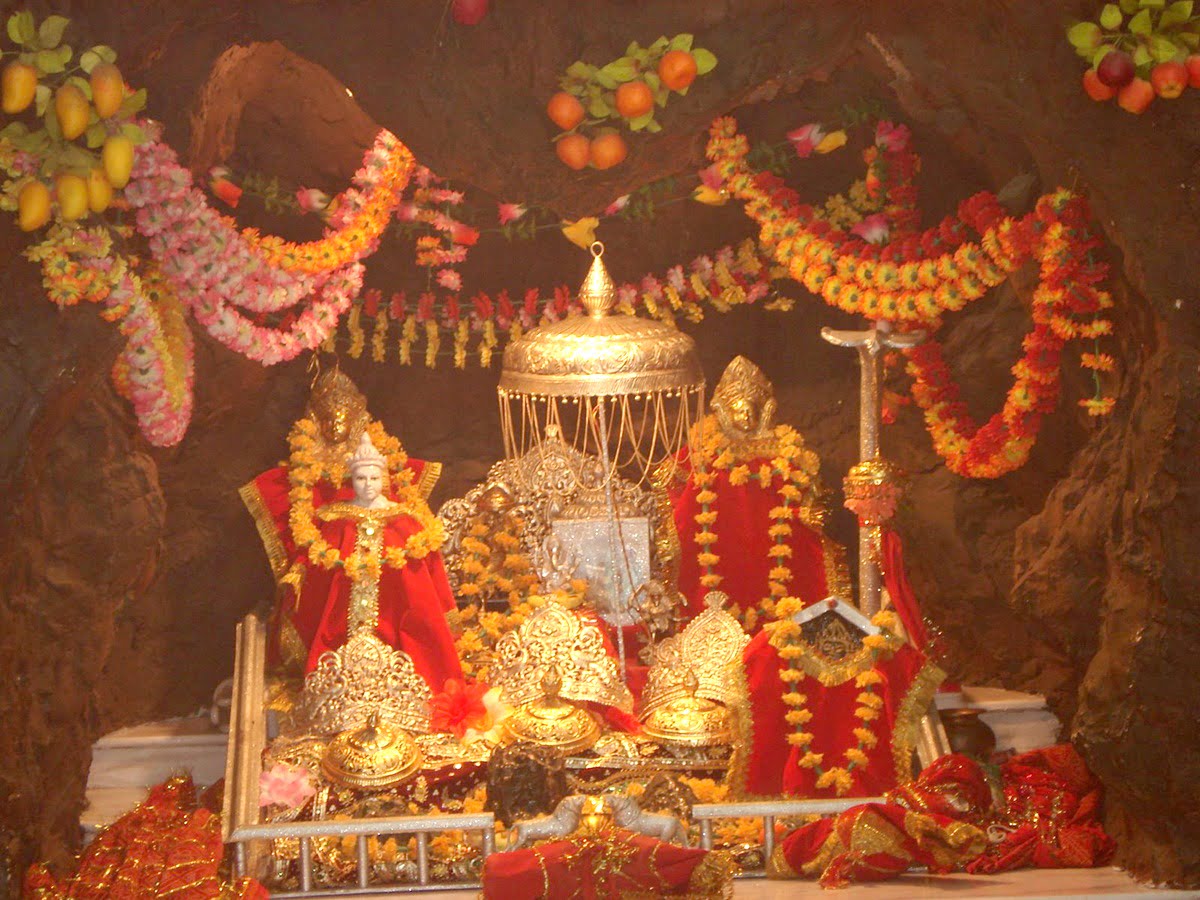
Located in the Trikuta Mountains, this temple is dedicated to Goddess Vaishno Devi. It is one of the most visited pilgrimage sites in India and attracts millions of devotees annually.
The temple is believed to have been built in the 15th century by a Hindu saint named Vaishnav Pandit. The temple is built in the Dravidian style of architecture, and is home to three shrines dedicated to the three forms of Durga: Mata Vaishnavi, Mata Saraswati, and Mata Mahakali.
The temple is located at an altitude of 3,000 meters (9,800 feet) above sea level, and is accessible by a 13-kilometer (8.1-mile) trek. The trek is considered to be a pilgrimage, and is a test of both physical and spiritual endurance.
Among India’s Top 10 Temples, it’s a popular tourist destination, and is visited by people of all faiths. The temple is also a major pilgrimage site for Hindus, and is especially crowded during the Navratri festival.
2. Tirupati Balaji Temple, Andhra Pradesh:
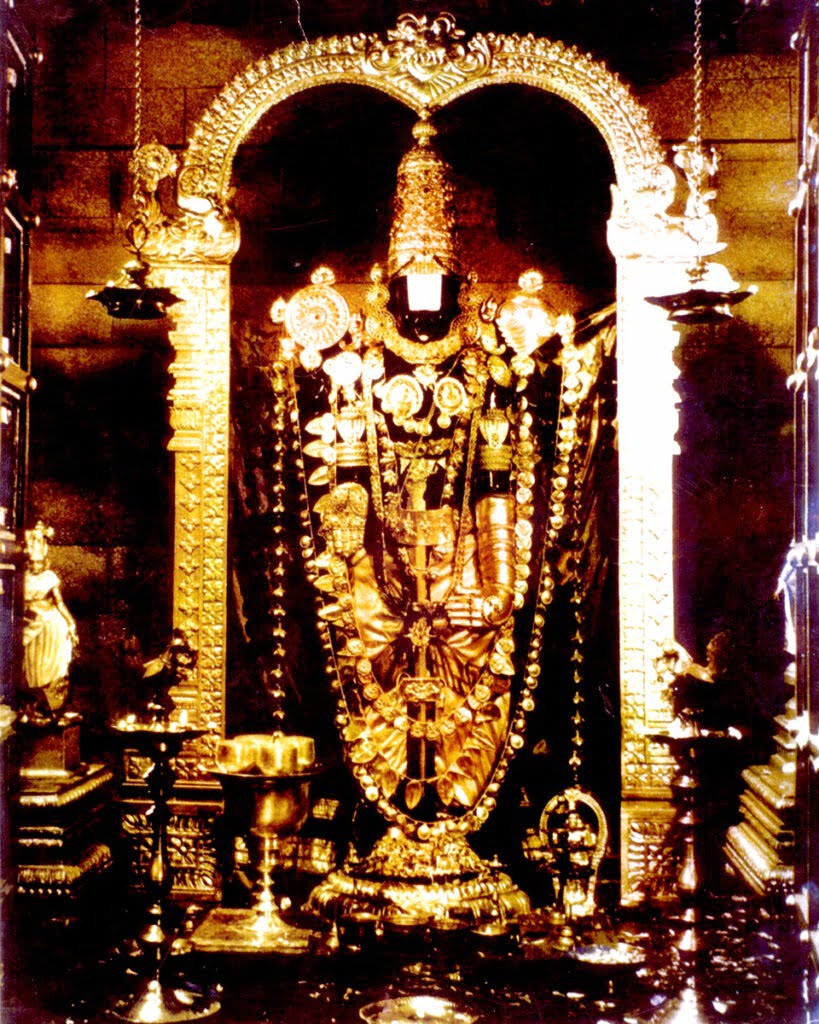
Also known as the Sri Venkateswara Temple, this temple is located in Tirumala. It is dedicated to Lord Venkateswara and is one of the richest and most visited temples in the world.
The temple is believed to have been built in the 9th century by King Krishna Devaraya. It is built in the Dravidian style of architecture. The temple has seven gopurams, or towers, the tallest of which is 236 feet high. The temple is also home to a number of other shrines, including those dedicated to Lord Shiva, Lord Brahma, and Lord Hanuman.
Among India’s Top 10 Temples, this temple is visited by millions of people every year. The temple is also a major pilgrimage site for Hindus, and is especially crowded during the Brahmotsavam festival, which is held every year in September.
3. Kashi Vishwanath Temple, Uttar Pradesh:
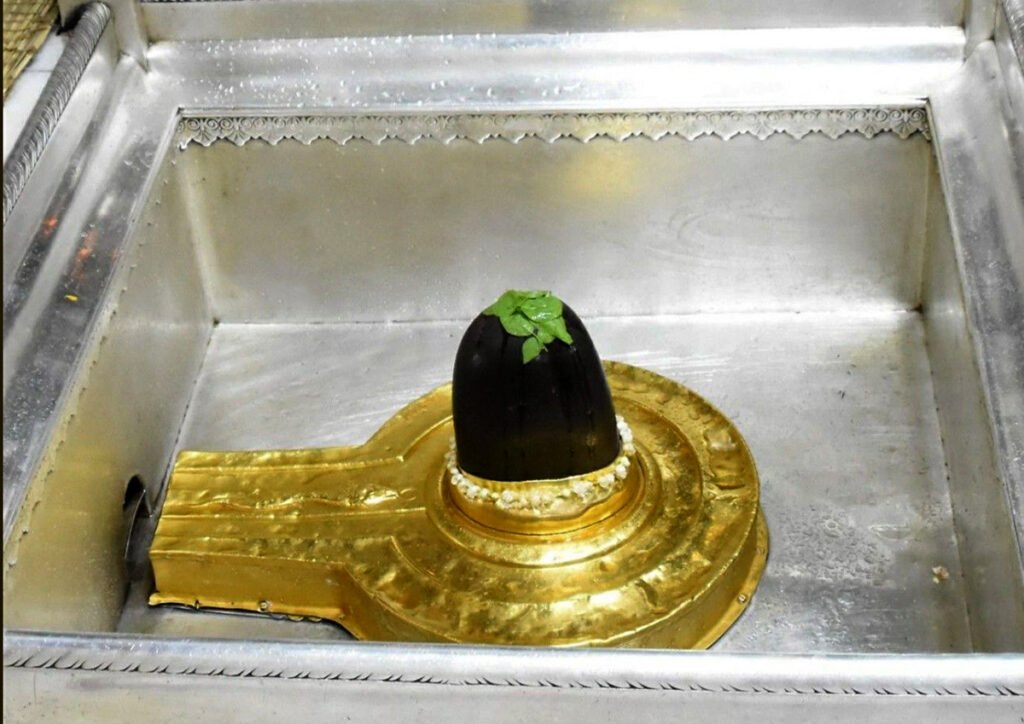
Situated in Varanasi, this temple is dedicated to Lord Shiva and holds immense spiritual significance for Hindus. It is one of the twelve Jyotirlingas and is believed to grant salvation to devotees.
Kashi Vishwanath Temple is a Hindu temple dedicated to Lord Shiva. It is located in Varanasi, Uttar Pradesh, India. The temple is one of the oldest and most important pilgrimage sites in Hinduism. It is said that the temple was built by Lord Brahma, the creator of the universe. The temple is made of white marble and has a gold-plated dome. The temple is surrounded by a large courtyard with a number of other temples. The temple is open to all Hindus, regardless of their caste or creed.
The temple is a popular tourist destination and is visited by millions of people every year. The temple is also a center of Hindu culture and learning. The temple has a number of schools and colleges that teach Hindu philosophy and religion. The temple also has a number of libraries that house a collection of Hindu scriptures and texts.
Kashi Vishwanath Temple is a symbol of Hindu faith and devotion. The temple is a place where Hindus come to pray for peace, prosperity, and salvation. Among India’s Top 10 Temples, this temple is also a place where Hindus come to learn about their religion and culture.
4. Golden Temple (Harmandir Sahib), Punjab:
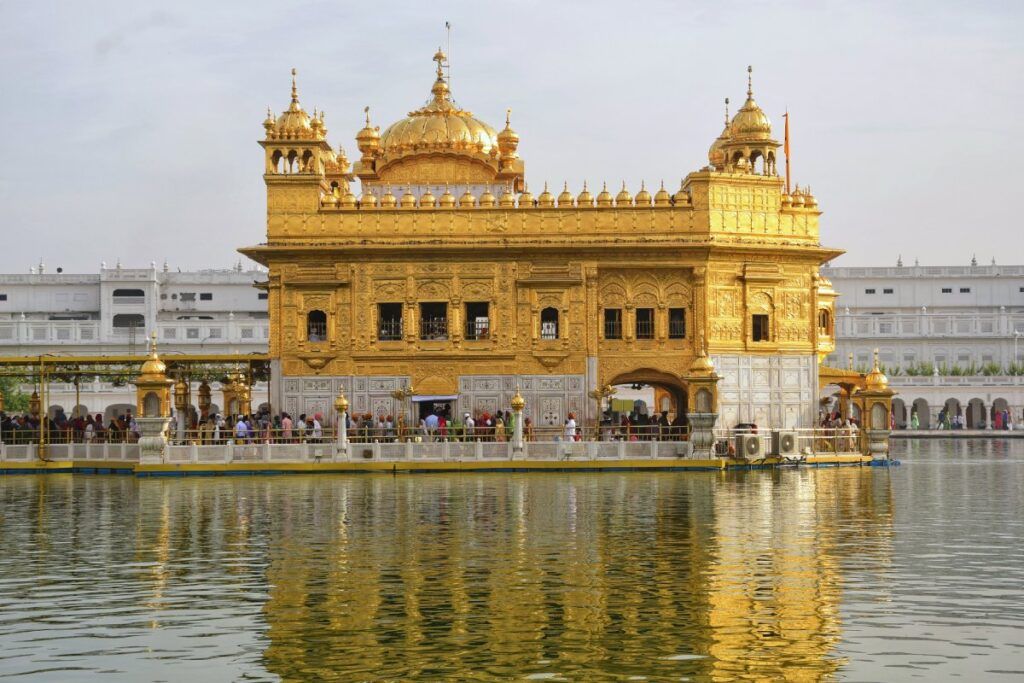
The holiest shrine in Sikhism, the Golden Temple is located in Amritsar. Its stunning golden architecture and the serene Amrit Sarovar (holy pool) make it a place of spiritual and cultural importance.
The Golden Temple is the holiest Gurdwara (Sikh place of worship) in the world. It is located in the city of Amritsar, Punjab, India. The temple is built on a square platform in the middle of a sacred pool called Amrit Sarovar. The temple itself is made of white marble and is topped with a golden dome. The four entrances to the temple are open to all people, regardless of their religion or caste.
The Golden Temple is a symbol of Sikhism’s core values of equality, universal brotherhood, and acceptance of all people. It is a place where people of all faiths can come together to pray, meditate, and reflect.
The Golden Temple is also a major tourist destination, attracting millions of visitors from all over the world each year. The temple complex is home to a number of other buildings, including a library, a museum, and a kitchen that provides free food to all visitors.
The Golden Temple is a truly beautiful and inspiring place. Among India’s Top 10 Temples, this is a must-visit for anyone interested in learning more about Sikhism or simply experiencing the beauty of Indian culture.
5. Konark Sun Temple, Odisha:
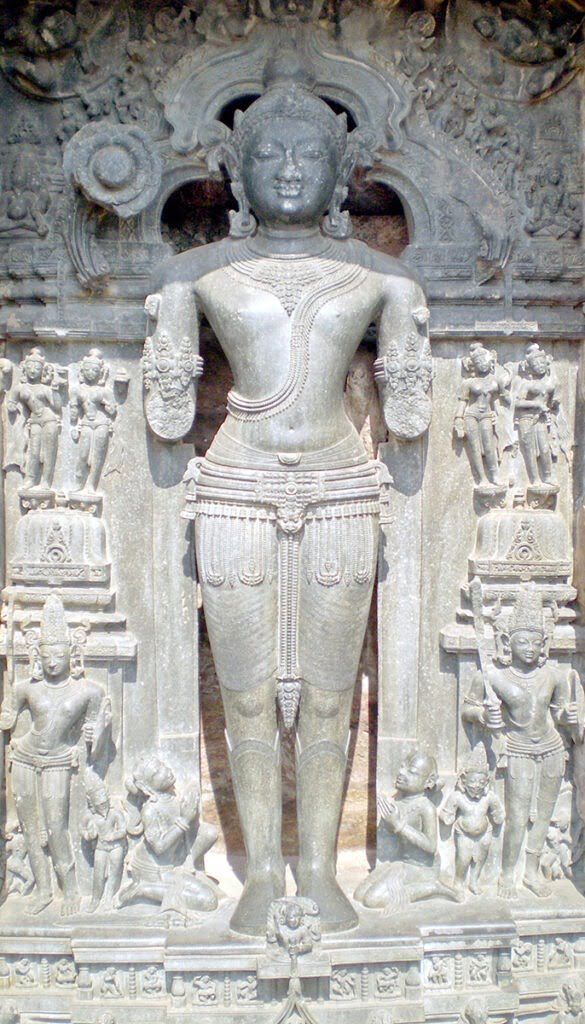
Known for its exquisite stone carvings and intricate architecture, this temple is dedicated to the Sun God Surya. It is designed in the shape of a chariot with 12 pairs of wheels and is a UNESCO World Heritage Site.
Konark Sun Temple is a 13th-century Hindu temple in Konark, Odisha, India. It is dedicated to Surya, the Hindu god of the sun. The temple is one of the most important examples of Kalinga architecture, and is a UNESCO World Heritage Site.
The temple is built in the shape of a chariot, with 12 pairs of wheels and 7 horses. The walls of the temple are decorated with sculptures of Surya, his charioteer Aruna, and other Hindu gods and goddesses. The temple is also home to a number of astronomical instruments, including a sundial and a water clock.
The Konark Sun Temple was built by King Narasimha Deva I of the Eastern Ganga Dynasty in the 13th century. The temple was destroyed by a cyclone in the 16th century, but it has been restored in recent years.
The Konark Sun Temple is a masterpiece of Kalinga architecture, and is a symbol of India’s rich cultural heritage. Among India’s Top 10 Temples, this temple is a popular tourist destination, and is visited by millions of people every year.
6. Meenakshi Amman Temple, Tamil Nadu:

Located in Madurai, this temple complex is dedicated to Goddess Meenakshi (Parvati) and Lord Sundareswarar (Shiva). Its towering gopurams (ornate entrance towers) are a marvel of Dravidian architecture.
The Meenakshi Amman Temple is a Hindu temple dedicated to Meenakshi, a form of Parvati, and her consort Sundareshwara, a form of Shiva. It is located in the city of Madurai, Tamil Nadu, India. The temple is one of the largest and most important temples in India, and is a UNESCO World Heritage Site.
The temple was built over a period of 1,000 years, starting in the 6th century CE. It is a fine example of Dravidian architecture, with a complex of towering gopurams (gateway towers), intricately carved pillars, and a number of shrines dedicated to different Hindu deities.
The main shrine of the temple is dedicated to Meenakshi and Sundareshwara. The image of Meenakshi is a four-armed form of Parvati, with a fish’s head. The image of Sundareshwara is a lingam, a representation of Shiva’s power.
The temple is also home to a number of other important shrines, including those dedicated to Ganesha, Murugan, and Vishnu. The temple also has a number of halls and courtyards, as well as a sacred pool.
The Meenakshi Amman Temple is a major pilgrimage site for Hindus, and is also a popular tourist destination. Among India’s Top 10 Temples, this temple is open to all visitors, and is a must-see for anyone interested in Hindu culture and architecture.
7. Somnath Temple, Gujarat:
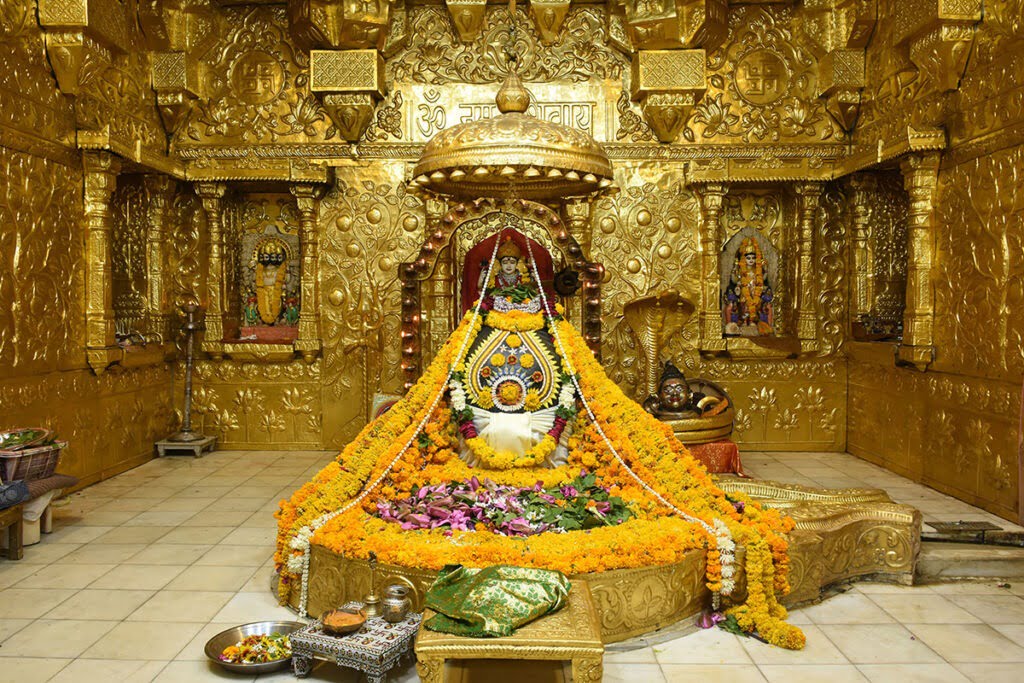
Situated by the Arabian Sea, the Somnath Temple is one of the twelve Jyotirlingas dedicated to Lord Shiva. It has a rich history and has been rebuilt several times over the centuries.
The Somnath Temple is a Hindu temple dedicated to Shiva, located in Prabhas Patan in Gujarat, India. It is one of the twelve jyotirlinga shrines of Shiva, and is considered to be one of the most important pilgrimage sites in Hinduism.
The temple is believed to have been built by Somraj, the moon god, in the 1st millennium BCE. It was destroyed several times by Muslim invaders, most notably by Mahmud of Ghazni in 1026 CE. The current temple was rebuilt in the 19th century by Maharaja Sayajirao Gaekwad III of Baroda.
The Somnath Temple is a beautiful example of Gujarati architecture. It is built in the Chalukya style, with a carved stone shikhara (spire) and a number of smaller shrines. The temple is also home to a number of sculptures of Shiva and other Hindu deities.
The Somnath Temple is a popular tourist destination, and is visited by millions of people every year. Among India’s Top 10 Temples, this temple is also a major pilgrimage site for Hindus, and is especially crowded during the Maha Shivratri festival.
8. Akshardham Temple, Delhi:
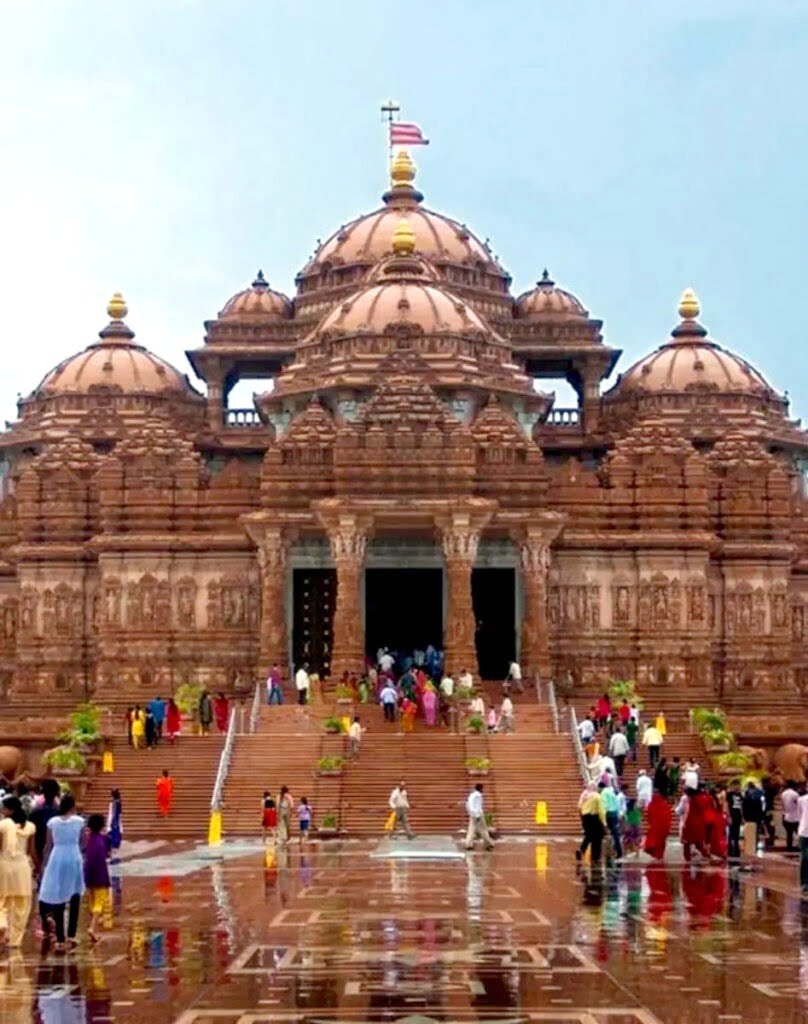
Also known as Swaminarayan Akshardham, this temple complex is known for its intricate carvings, cultural exhibitions, and stunning architecture. It showcases Indian art, culture, and spirituality.
Akshardham Temple is a Hindu temple located in Delhi, India. It is a complex of 264,000 square feet (24,400 m²) of sandstone buildings and gardens. The temple was constructed by the Bochasanwasi Akshar Purushottam Swaminarayan Sanstha (BAPS), a Hindu sect.
The temple was inaugurated on 6 November 2005 by then President of India A. P. J. Abdul Kalam. It is dedicated to Swaminarayan, the founder of BAPS. The temple is a popular tourist destination and has been visited by over 10 million people since its opening.
The temple is built in the traditional Gujarati style. The main temple is a 141-foot (43 m) tall sandstone tower with a golden dome. The temple is surrounded by a garden with a number of smaller shrines. The temple also has a number of museums and educational facilities.
Akshardham Temple is a symbol of Hindu culture and spirituality. It is a place where people of all faiths can come together to learn about Hinduism and its teachings. Among India’s Top 10 Temples, this temple is also a place where people can come to pray and meditate.
9. Jagannath Temple, Odisha:
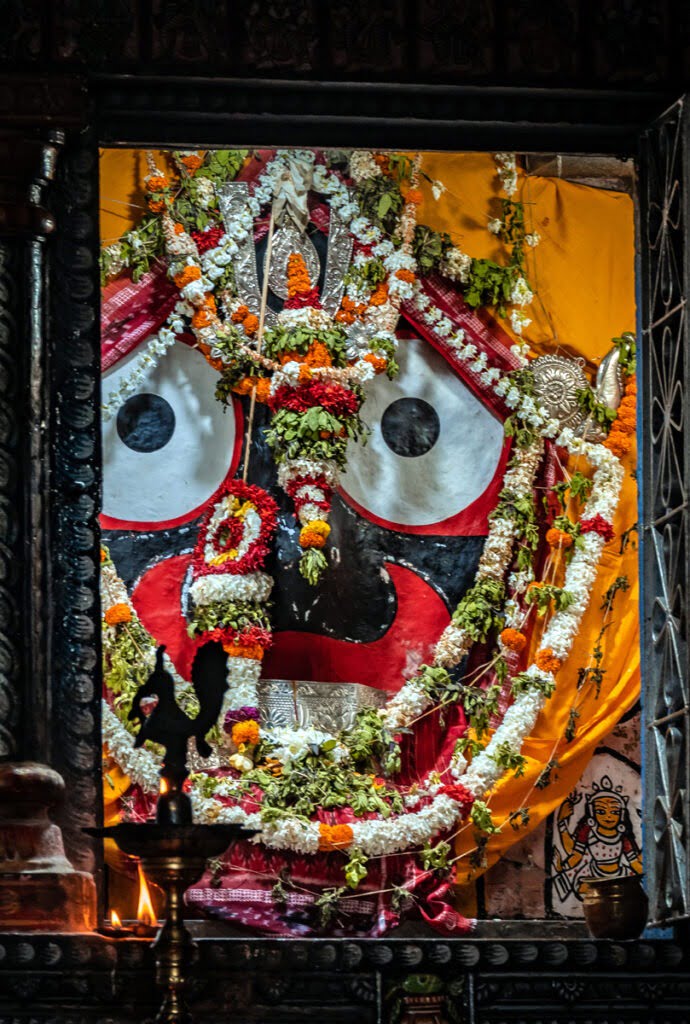
Located in Puri, this temple is dedicated to Lord Jagannath (a form of Lord Krishna). The annual Rath Yatra (chariot procession) is a famous event that attracts a large number of devotees.
The temple was built in the 12th century by King Anantavarman Chodaganga Deva of the Eastern Ganga dynasty. The temple is built in the Kalinga style of architecture, with a 543-foot (165 m) high tower called the Jagamohana.
The temple is home to the three main deities of Jagannath, his brother Balabhadra, and his sister Subhadra. The deities are made of wood and are dressed in silk clothes. The deities are not allowed to be touched by anyone, and they are bathed and dressed every day.
The Jagannath Temple is a popular tourist destination and is visited by millions of people every year. Among India’s Top 10 Temples, this temple is also a major pilgrimage site for Hindus, and is especially crowded during the Rath Yatra festival, when the deities are taken out in a procession on chariots.
10. Brihadeeswarar Temple, Tamil Nadu:

Also known as the Peruvudaiyar Kovil, this temple is located in Thanjavur. It is an architectural masterpiece and is dedicated to Lord Shiva. The temple’s main tower is one of the tallest in India.
The Brihadeeswarar Temple is a 11th-century Hindu temple dedicated to Shiva, located in Thanjavur, India. It was built by Rajaraja Chola I, the greatest king of the Chola dynasty. The temple is one of the largest and most impressive temples in India, and is a UNESCO World Heritage Site.
The temple is built in the Dravidian style of architecture, with a large gopuram (gateway tower) and a number of smaller shrines. The main shrine is dedicated to Shiva, and is home to a large lingam (aniconic representation of Shiva). The temple is also home to a number of other Hindu deities, including Vishnu, Brahma, and Durga.
The temple is decorated with a number of sculptures, including sculptures of Shiva, Vishnu, and other Hindu deities. The temple is also home to a number of inscriptions, which record the history of the temple and the Chola dynasty.
The Brihadeeswarar Temple is a popular tourist destination, and is visited by millions of people every year. Among India’s Top 10 Temples, this temple is also a major pilgrimage site for Hindus, and is especially crowded during the Maha Shivaratri festival.
